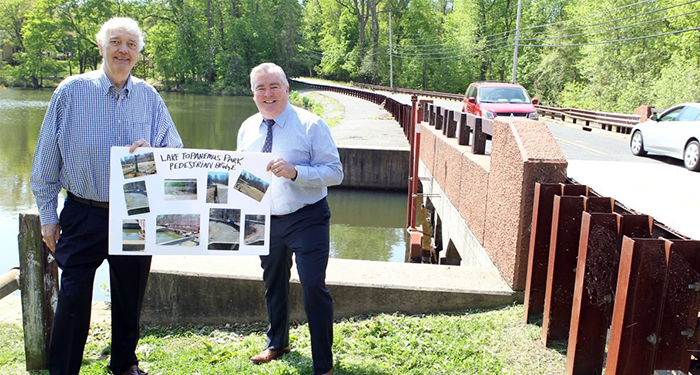
Freehold Borough Councilmen Ron Griffiths and Kevin Kane at the site of the proposed pedestrian bridge over Lake Topanemus, Freehold, NJ. Citizens voted to fund the building of the bridge through the process of participatory budgeting. Source: Beverly Schaefer.
Thea Crum, director of the Neighborhoods Initiative at the Great Cities Institute at UIC, is quoted in a Philadelphia Inquirer article about the process of participatory budgeting. Crum discusses one of the benefits of formal participatory budgeting by local governments. Philadelphia recently began a Participatory Budgeting campaign to allocate funds for sidewalk repair and pedestrian infrastructure, among other initiatives, and drew inspiration from Chicago’s active Participatory Budgeting Project.
Chicago was the first to formalize participatory budgeting in the United States in 2009, according to the nonprofit advocacy group Participatory Budgeting Project, which gives outreach materials and technical assistance to communities.
“Often, when people think about beginning new programs, they think about looking for new resources,” said Thea Crum, director of the Neighborhoods Initiative at the University of Illinois at Chicago’s Great Cities Institute, a partner of Participatory Budgeting Chicago. “One of the great things about PB is it really is just shifting how decisions are made about the same pot of money.”


